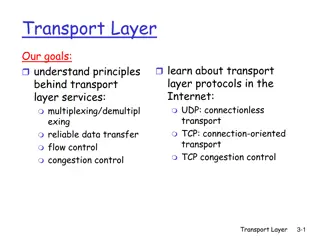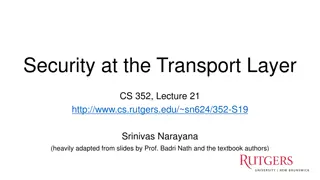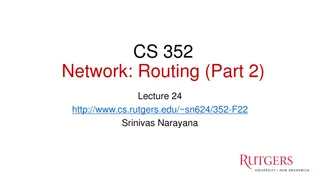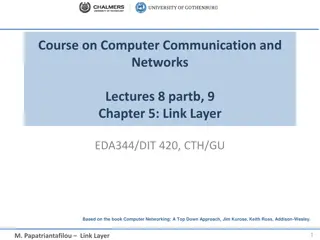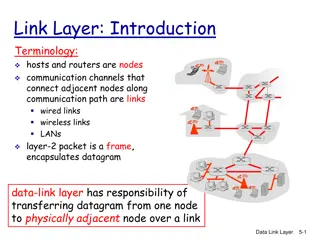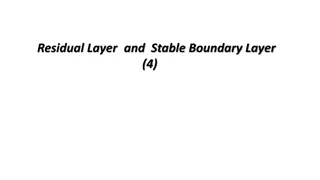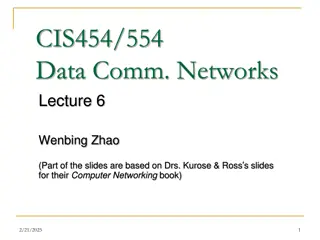Network Layer Fundamentals for Efficient Data Delivery
The network layer in the TCP/IP protocol suite is crucial for efficient host-to-host delivery of datagrams. It handles packetizing, routing, forwarding, and plays a key role in network performance evaluation, focusing on delay, throughput, and packet loss metrics.
Download Presentation

Please find below an Image/Link to download the presentation.
The content on the website is provided AS IS for your information and personal use only. It may not be sold, licensed, or shared on other websites without obtaining consent from the author. Download presentation by click this link. If you encounter any issues during the download, it is possible that the publisher has removed the file from their server.
E N D
Presentation Transcript
Computer Networks By Sadiq Shah Lecture 11 (Chapter 18) FATA University
NETWORK-LAYER SERVICES The network layer in the TCP/IP protocol suite is responsible for the host-to-host delivery of datagrams. It provides services to the transport layer and receives services from the data-link layer. network-layer services 1. Packetizing The first duty of the network layer is definitely packetizing. duty of the network layer is to carry a payload from the source to the destination without changing it or using it. The network layer is doing the service of a carrier such as the postal office, which is responsible for delivery of packages from a sender to a receiver without changing or using the contents.
2. Routing and Forwarding Routing The network layer is responsible for routing the packet from its source to the destination. A physical network is a combination of networks (LANs and WANs) and routers that connect them. This means that there is more than one route from the source to the destination. The network layer is responsible for finding the best one among these possible routes. In the Internet today, this is done by running some routing protocols e.g RIP OSPF etc.
Forwarding Forwarding can be defined as the action applied by each router when a packet arrives at one of its interfaces. The decision-making table a router normally uses for applying this action is sometimes called the forwarding table and sometimes the routing table. When a router receives a packet from one of its attached networks, it needs to forward the packet to another attached network
NETWORK-LAYER PERFORMANCE The performance of a network can be measured in terms of delay, throughput, and packet loss. 1. Delay The delays in a network can be divided into four types: transmission delay, propagation delay, processing delay, and queuing delay. Transmission delay A sender needs to put the bits in a packet on the line one by one. If the first bit of the packet is put on the line at time t1and the last bit is put on the line at time t2, transmission delay of the packet is (t2 t1). Definitely, the transmission delay is longer for a longer packet and shorter if the sender can transmit faster.
Propagation Delay Propagation delay is the time it takes for a bit to travel from point A to point B in the transmission media. The propagation delay depends on the propagation speed of the media, which is 3 108meters/second in a vacuum and normally much less in a wired medium; it also depends on the distance of the link. In other words, propagation delay is
Processing Delay The processing delay is the time required for a router or a destination host to receive a packet from its input port, remove the header, perform an error detection procedure, and deliver the packet to the output port Delaypr= Time required to process a packet in a router or a destination host Queuing Delay Queuing delay can normally happen in a router. A router has an input queue connected to each of its input ports to store packets waiting to be processed; the router also has an output queue connected to each of its output ports to store packets waiting to be transmitted. The queuing delay for a packet in a router is measured as the time a packet waits in the input queue and output queue of a router.
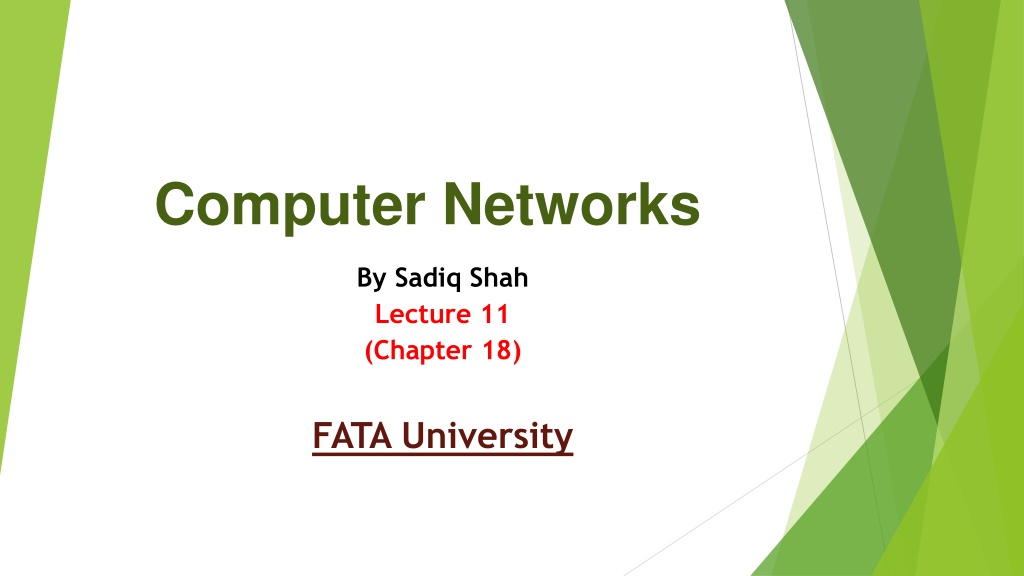
 undefined
undefined





